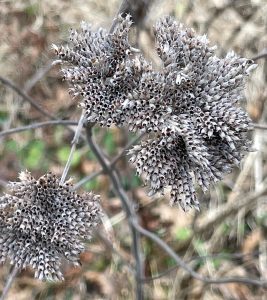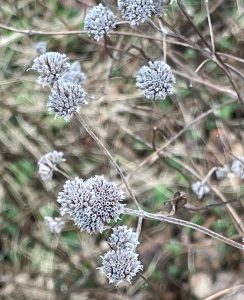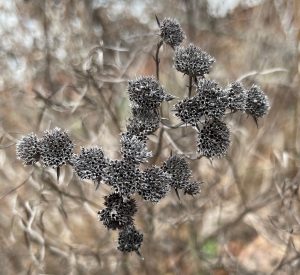Way back in March 2018, I wrote about Pycnanthemum, the mountain mints (there are several). These rewarding plants are powerhouse attractors of pollinators and provide winter interest with their interesting dried flowerheads.

Back then, I had two: Pycnanthemum muticum (the most common species that you’re likely to find on sale) and P. tenuifolium (narrow-leaf mountain mint, a shorter species, with leaves reminiscent of Coreopsis verticillata). Since then I acquired a couple more, P. incanum (hoary or silverleaf mountain mint) and P. flexuosum (Appalachian mountain mint). I couldn’t find my P. flexuosum this year, so I guess it got outcompeted in my undisciplined garden, but I am very pleased with my P. incanum. I joined a bumblebee watch project this past summer, and it seemed to me that the incanum attracted even more than the muticum. My theory was that this is because the incanum flowers are bigger, so better for those big bumblebees to land on.
The differences among these in the winter garden are striking.

I have far more P. muticum than the others, as I got it long ago, and it is one that spreads readily; the two others are more restrained. However, recently I learned that there are different strains of P. muticum. The source I found refers to the “garden-center” strain and “local ecotype” strains, with the garden-center strain being larger and more aggressive than the local ecotypes. I concluded that I had both, based on the photos presented. This makes sense, since I acquired some from Chesapeake Natives, which deals with local ecotypes, and some from plant swaps and the like.
So if you want the advantages of growing mountain mint but were worried that it might take over your garden, you have options!
